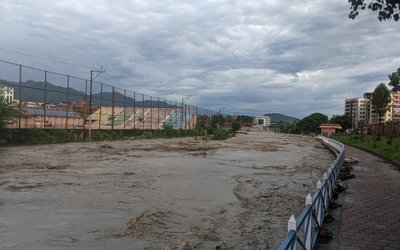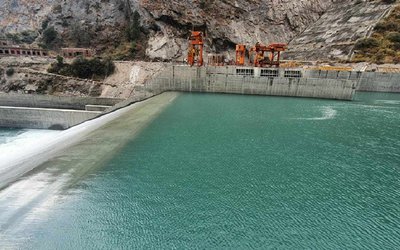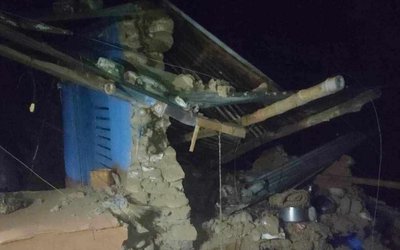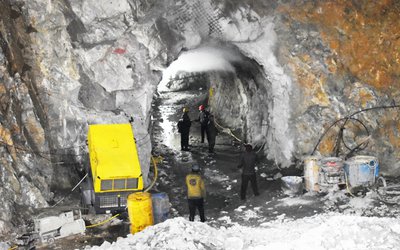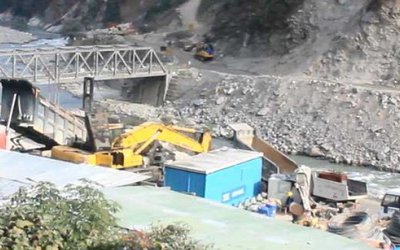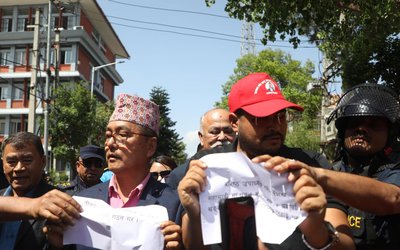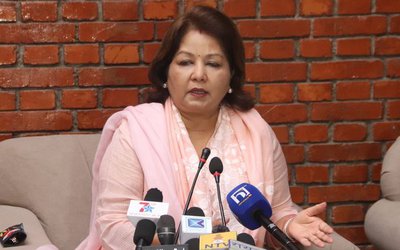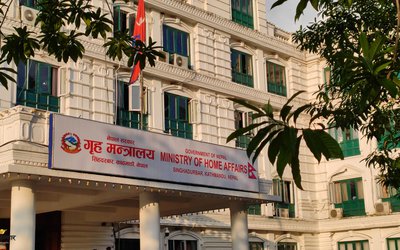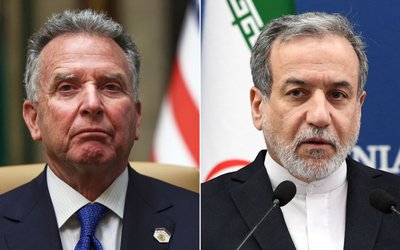
Minister of Energy, Water Resources and Irrigation Barshaman Pun 'Ananta' said that with the end of political transition and formation of a stable government, our priority is oriented towards making Nepal prosperous by, among other things, optimum utilization of the vast water resources that nature has bestowed on us.
He thanked Bangladesh government inviting him to take part and speak in opening ceremony of Power and Energy Week 2018 which aims not only to showcase Bangladesh’s achievements in the power and energy sector but also to provide a platform for investment and strengthen cooperation between countries and key stakeholders.
“It gives me immense pleasure to recall that Nepal and Bangladesh have been enjoying excellent relations marked by friendship, cordiality, goodwill, cooperation and understanding ever since the establishment of diplomatic relations in 1972. Our two countries have excellent cooperation in bilateral trade and other economic spheres,” said Minister Pun.
Addressing the opening Ceremony of Power and Energy Week, minister Pun said that the need for cooperation in power sector was realized by us a long time back. In this context, the energy ministerial level visits during the period of 2014 to 2016 laid a firm foundation to frame cooperation in power sector between our two countries.
“As we all know, the month of August this year held special significance for meaningful cooperation in the field of power sector. We signed a memorandum of understanding between Nepal and Bangladesh to cooperate in the field of power sector. At the regional level, a Memorandum of Understanding on BIMSTEC Grid Interconnection was signed during the 4th BIMSTEC Summit held in Kathmandu. These instruments amply reflect our commitment to achieving common goal of bilateral and regional energy connectivity.”
Sub regional and regional energy connectivity is necessary for balancing energy supply and demand in the region. The electricity generating resources available in our region provide formidable strength to enhance sustainable energy development.
Moving ahead, let me now talk about the development of hydropower in Nepal.
Nepal holds a huge potential of hydropower generation. Currently our total installed capacity has passed one Giga watt mark and per capita electricity consumption has reached about 200 kilowatt hour. We have been able to provide electricity access to about 87% of our population through grid and off-grid power supply.
Since 1992, the Government of Nepal has adopted a policy of the optimum utilization of water resources to generate hydroelectricity through private sector involvement. With this initiative, various hydropower projects with more than 4,000 MW capacity are now in different stages of construction. In the coming 3-5 years, electricity generation is expected to reach five fold of the current capacity of our country.
“We released a White Paper on current situation and future road map for "Energy, Water resources and Irrigation Sector". We have set a target to generate 15,000 MW of hydroelectricity in ten years and we intend to set aside 5,000 MW for external trade,” said Minister Pun.
Nepal has one 400 KV high voltage cross border inter-connection line with India already in operation. Furthermore, there are five other Indo-Nepal cross boarder interconnection points identified with one of them almost ready for construction.
Given that there is already some bilateral trade existing between Nepal and India and also between Bangladesh and India, it is high time now to reach to a trilateral consensus to build a common transmission link between Nepal and Bangladesh through India so that the direct transaction of power between us could also take place. Existing SAARC framework and bilateral agreements can guide us to forge such a consensus.
As the trading of hydroelectricity with neighbouring countries remains our priority, we are willing to exploit our tremendous hydro-potential through investments from our neighboring countries. For this, we welcome the investment from Bangladesh in modalities like G to G, G to B, B to B etc.
- Invest Small Portion Of your earnings in Nepal, we will create an environment that will yield returns: Chairman Dhakal
- Apr 20, 2025
- RPP Leaders Demonstrated Inside Singhadurbar , Linden Arrested
- Apr 20, 2025
- Foreign Minister Dr. Deuba to head to Bangkok to chair UN Meeting
- Apr 20, 2025
- We Do, What We Say, The Government Will Not Be Afraid: RPP Leader Lingden
- Apr 20, 2025
- Home Ministry warns RPP: Action will be taken if it violates prohibited Areas
- Apr 20, 2025
